The three-petalled Lily of France on the coat of arms of the Farnese Family, Lords of Tuscia, also decorate the windows and portals of the ancient palaces in the area of Viterbo. By exploring the neighbouring charming villages and enchanted castle, we will be able to trace the indelible footsteps of the most famous and powerful woman of the Family, Giulia Farnese, known as “La Bella”, died in Rome on March 23, 1524. Over five-hundred years after her death, on March 8, the International Women’s Day, we will tell her story and unexpected anecdotes.
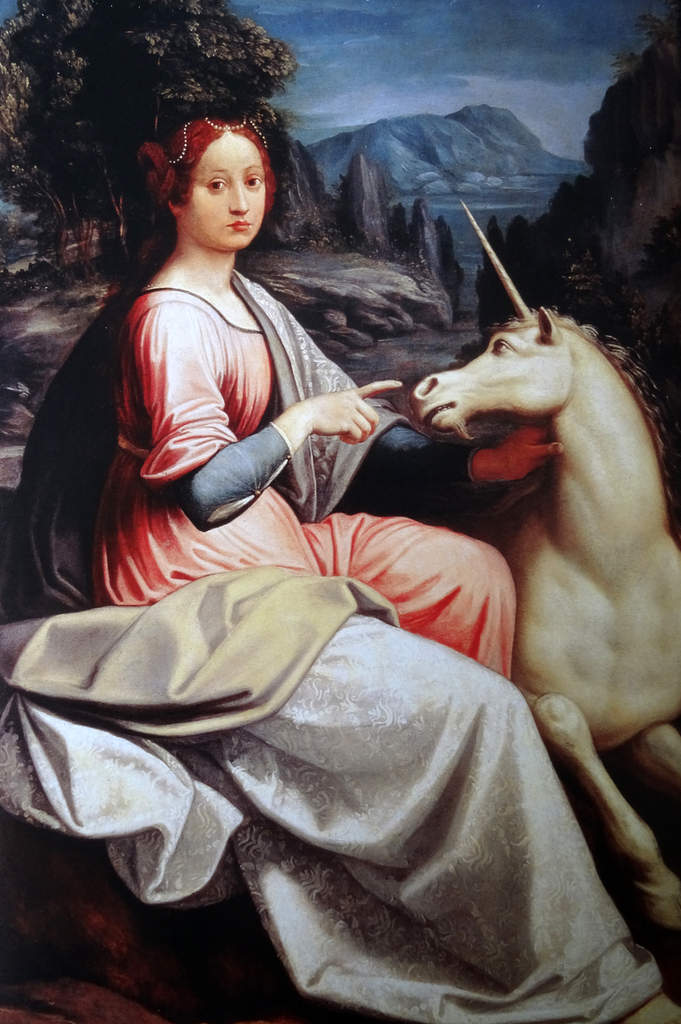
Luca Longhi, The Lady and the Unicorn, presumed portrait of Giulia Farnese – Wikipedia photo
We will not dwell on the controversial relationship of Giulia Farnese with Pope Alessandro VI, born Rodrigo Borgia, that earned her the nickname of “The Christ’s Bride”. Nor will we linger on her damnatio memoriae after the election of her brother Alessandro to the Papal throne, which resulted in the cancellation of Giulia Farnese from historical records by alteration or destruction of documents and portraits. We will only explore the places where she led a happy life and which she wisely administered.
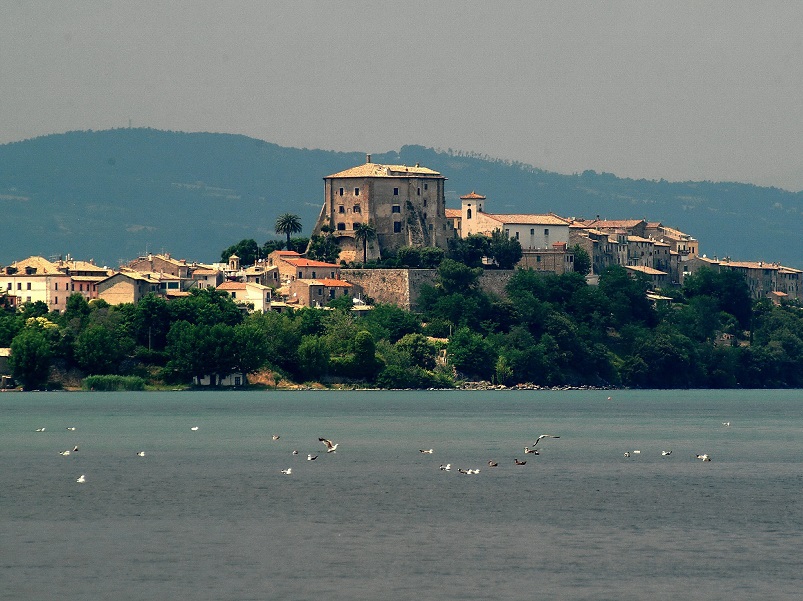
Rocca Farnese di Capodimonte
Giulia was born around 1475 presumably in Capodimonte, or maybe in the nearby Canino, to the landlord Pierluigi and Giovannella Caetani, who belonged to the ancient noble Family from Sermoneta. The charming village of Capodimonte, overlooking the splendid shores of Lake Bolsena, is also famous for its gastronomic specialities, such as the Pecette and the Maccheroni with walnuts.
 It is said that the popular fairy-tale “The Beauty and the Beast” originated in Rocca Farnese in Capodimonte, where Giulia loved staying. In the Farnese Castle lived and died the courtier Pedro Gonzales, known as “The Hairy”, whose life inspired the story from the second half of the sixteenth century, much later adapted as a Walt Disney cartoon.
It is said that the popular fairy-tale “The Beauty and the Beast” originated in Rocca Farnese in Capodimonte, where Giulia loved staying. In the Farnese Castle lived and died the courtier Pedro Gonzales, known as “The Hairy”, whose life inspired the story from the second half of the sixteenth century, much later adapted as a Walt Disney cartoon.
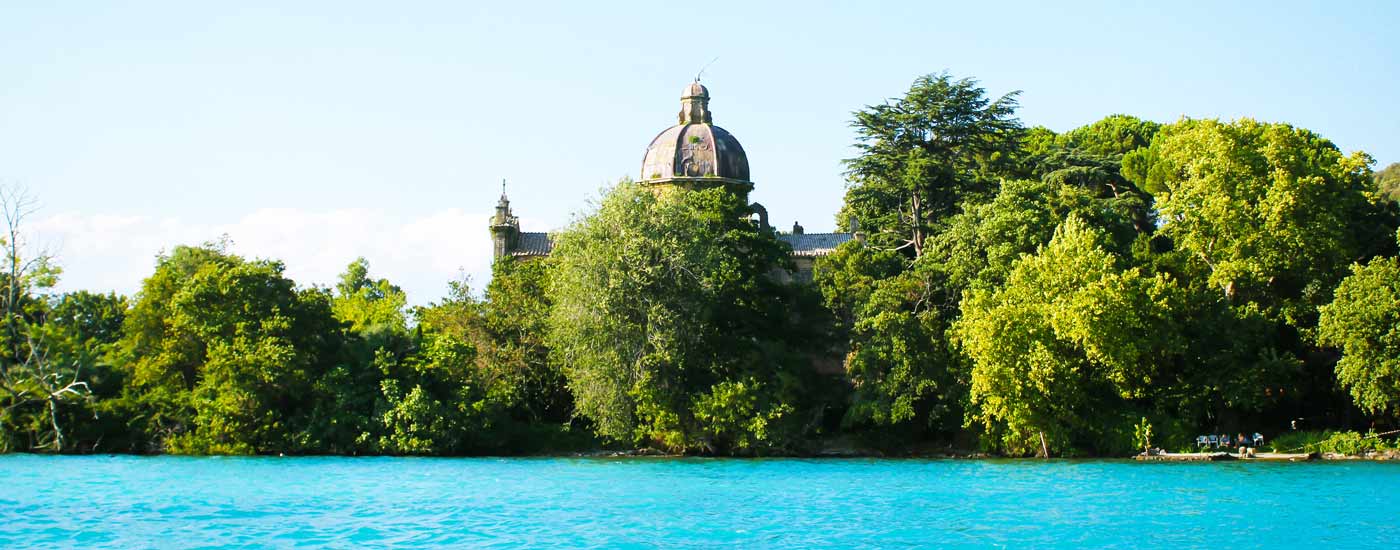
The Isola Bisentina and The Dome by Vignola
From the Castle, it will be possible to enjoy a breathtaking view of the wild Isola Bisentina, home of the last Farnese Family members. In 2022 it was open to visitors, who can now enjoy a relaxing boat trip or a dip in the clear waters of Lake Bolsena.
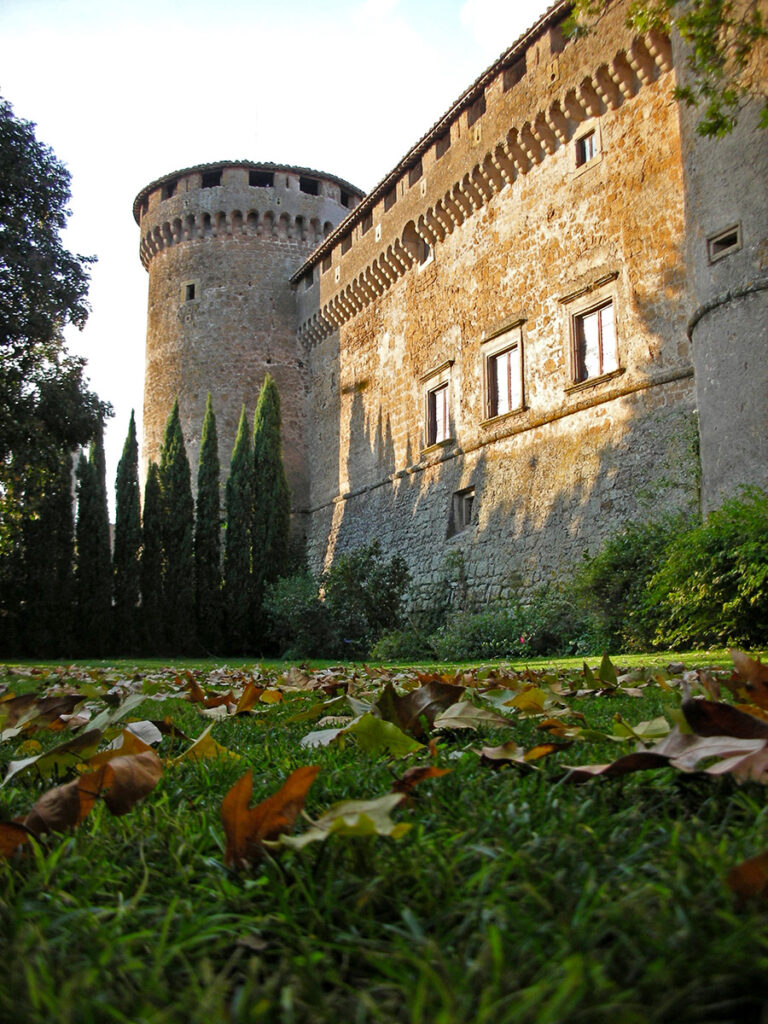
Orsini Castle in Vasanello – photo by Ardelio Loppi
On May 9, 1490, Giulia, orphaned by her father, was given in marriage by her brothers Angelo and Alessandro to Orsino Orsini, the Lord of Bassanello, now Vasanello, the village of vases. Pinturicchio himself is said to have painted the frescoes in the magnificent castle, where Giulia lived. The noble residence, now a private property, still preserves works of considerable artistic value, such as several medallions portraying profiles of faces, some brutally abraded, presumably as evidence of the violent damnatio memoriae that followed the death of the Lady. But let us not be discouraged by these events since, according to accredited studies, Madama Giulia’s face can be identified in some frescoes inside the Rocca, as well as on a wood-coloured bust, probably in burnished plaster, in which the noblewoman is portrayed in clothes not chaste enough for those times. In fact, according to experts, it may date back to a period not earlier than the eighteenth century.
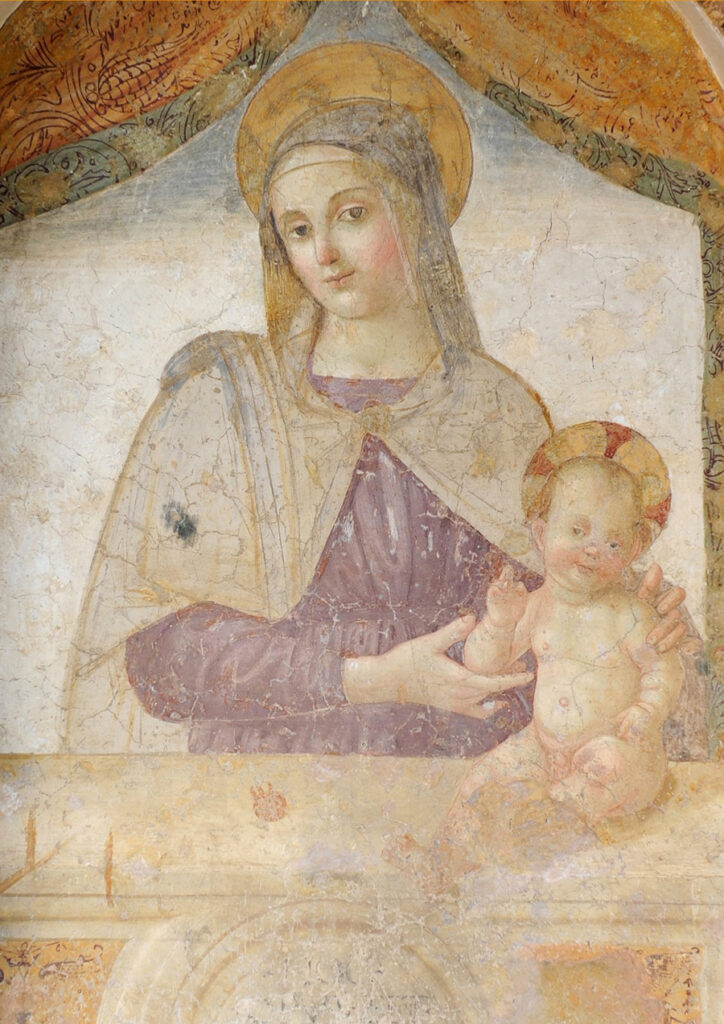
The “Virgin with Child” in the Church of the Madonna delle Grazie in Vasanello – photo by Ardelio Loppi
The affection for Giulia Farnese from the people of Vasanello made them recognize her in the “Virgin with Child”, on the façade of the Church of the Madonna delle Grazie, probably attributed to Il Perugino himself. Widowed in 1500, after the accidental death of her husband caused by a collapsed roof, she remarried in 1509 to the Neapolitan nobleman Giovanni Capece Bozzato. Before moving to the feud, where Giulia reigned in peace for more than twenty years, let us taste the exquisite Gnocco cò la ratta cacio from Vasanello, a first course made with flour, water and eggs.
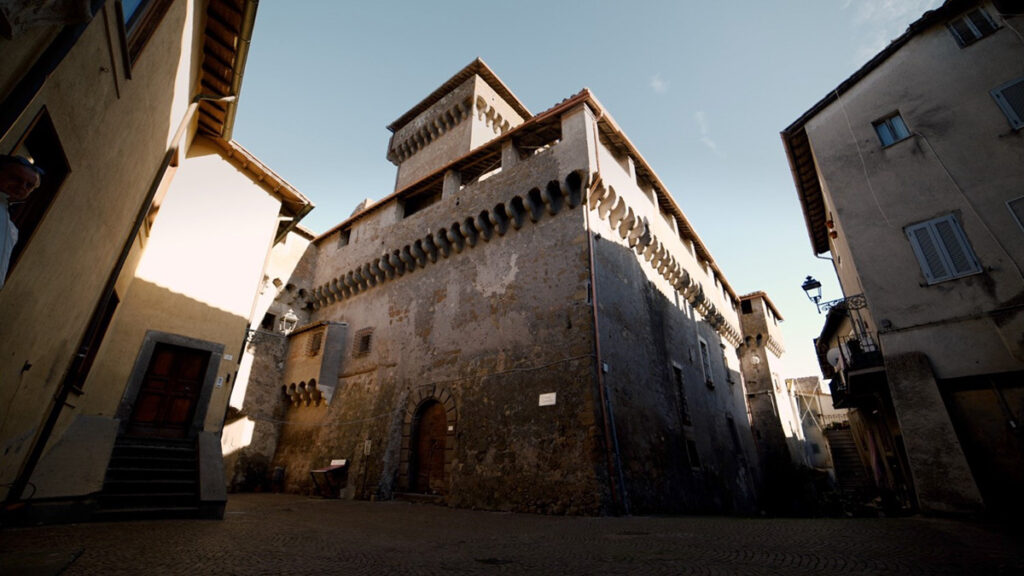
Carbognano Castle – photo by Sigfrido Junior Hobel (Project Tuscia)
She moved to Carbognano and then was finally buried, as per her last will and testament, on the Isola Bisentina. One of the first interventions carried out during Giulia’s twenty-year principality was the renovation and decoration of the ancient preexisting castle.
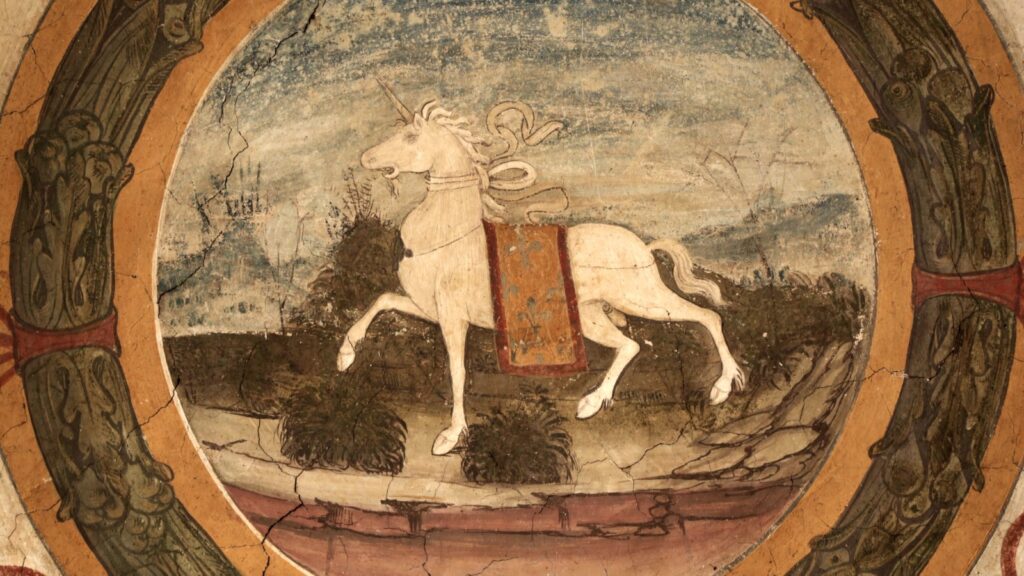
Carbognano Castle, “Tondo with Unicorn” – photo by Sigfrido Junior Hobel (Project Tuscia)
Everything here speaks of her will of being celebrated as a domina, in order to escape the provocative gossips and offensive nicknames circulating in Rome. Most frescoes bear hermetic writings or depict female figures and grotesque or mythological animals, such as the unicorn, already elected as a symbol of her own imposing family. Of particular interest is the bathroom, equipped with a real hot water tub, a rarity in those times! The area around the castle boasts a rich culinary tradition, with recipes such as the the Gavinelle from Carbognano (fettuccine with venison ragout) or the Verginelle, the delicious walnut pastries from the Cimini Mountains.

Carbognano Castle, frescoes of the lunettes – photo by Sigfrido Junior Hobel (Project Tuscia)
Giulia Farnese also stood out as skilled administrator and benefactor towards poor young girls and her collaborators. She was a good woman at heart, so much that, in her will, she left part of her assets to the trusted people who remained by her side during her whole life. She also commissioned works that made her name immortal, such as the Church of Santa Maria dell’Immacolata Concezione.

Rocca dei Papi in Montefiascone
But being among the favourites of the most powerful figures of the Renaissance did not protect her from adversity and from being kidnapped, during a visit to her fiefdoms, by the French cavalry and imprisoned for at least two days in the Rocca dei Papi in Montefiascone.
Giulia Farnese was one of the most seductive figures of the Capitoline history, a woman both beloved and talked about in the sixteenth-century Rome, politically intelligent and very advanced for her time.
Long live Giulia, long live all women!
